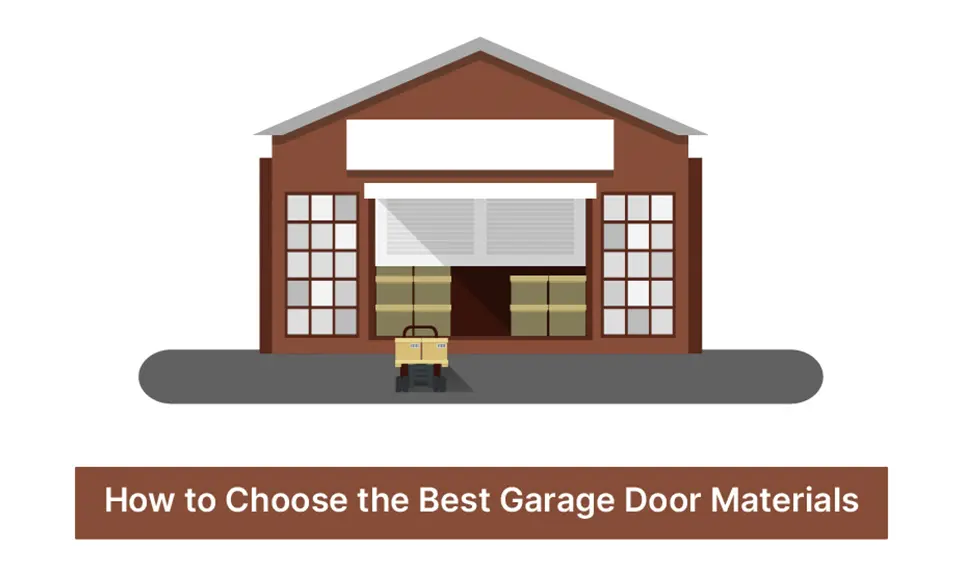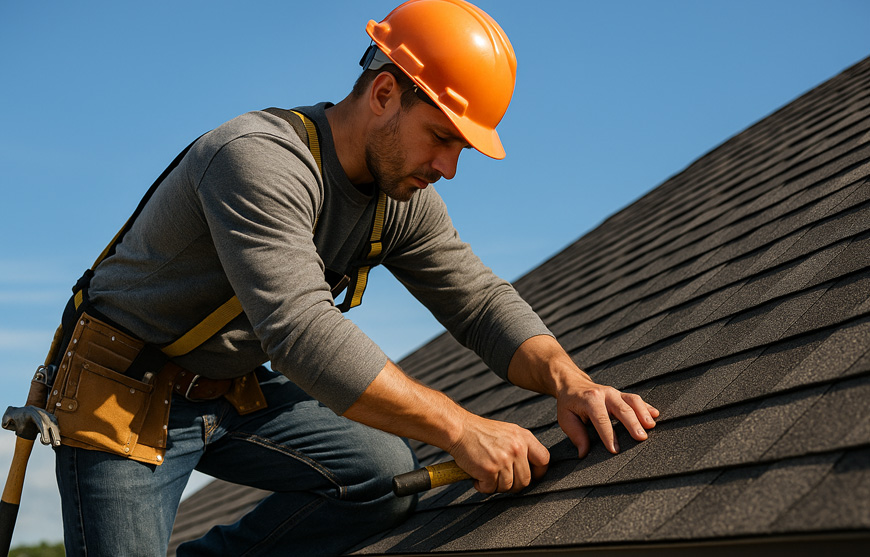Our cars are an indispensable part of our lives. From taking them for grocery shopping to letting us get to our workplaces, cars are indispensable to our daily lives. If you are planning on buying a home, or want to redesign your home, then you would definitely have a plan to either choose a home with a spacious garage, or design a garage into your existing home’s plans.
Garages are a major point home buyers consider before putting their money down on a new home. The emphasis placed on a garage has also put equal emphasis on improving garage door materials to suit the purpose.
Not only is this to improve how the garage looks from the outside, but the latest advances have helped in improving their durability and safety, all adjusted for a variety of budgets. If you’re looking for new material for your garage door, then you’ll be happy to know there are more than faux wood and wood garage doors. We’ll look at a number of door materials at a range of budgets.
Understanding your garage door construction
Learning how your garage door is made makes a huge difference in learning what kind of materials you can use to upgrade your door materials. There can be huge differences in construction between wood garage doors to fiberglass garage doors. The same differences will exist between steel garage doors and vinyl garage doors.
In the US, the most common option is the sectional door, which consists of some horizontal panels attached together with rollers to enable movement. Sectional doors can be purchased with windows if required and even in any style and material according to your home’s aesthetics.
Another type of garage door is the hinged garage door or the swing-style garage door. While they’re typically made from wood and are balanced on hinges, they are great for aesthetics and help the garage blend in well with the home. One major benefit of swinging doors is that they can be a lot more energy-efficient than automatic doors, mainly because they only have one joint to seal.
The major downside of swing doors is that they require a wide area of clearance to operate. Parking too close to swinging doors will prevent you from opening them. Another major disadvantage is that they are a lot more time consuming to open, close, and lock when compared to sectional doors that open vertically, while also being a bit more expensive to automate.
But based on which type of door you have or have chosen, there are some materials that you can consider for your doors.
6 garage door materials you can choose from
As we’ve mentioned before, garage doors can come in a variety of materials, depending on what your budget and preferences are. Metals, wood composites, fiberglass, vinyl, or glass garage doors, the choices are endless. But typically, most homeowners tend to choose wood as their preferred material. But let’s take a look at each of the materials in detail.
Material 1: Steel
Steel doors are typically made from a double layer of galvanized steel. If the metallic grey color isn’t to your liking, the surface of the steel can be primed and painted into any color that you prefer. You can also add insulation to steel doors if you live in a colder region. The major downside is that steel garage doors can be prone to corrosion if you live near coastal areas.
Material 2: Real wood
Wooden garage doors offer multiple layers to prevent the wood from warping. Depending on your budget, you can choose from a variety of woods, such as fir, redwood, cedar, oak, teak, meranti, etc. If you prefer the natural look of the wood, then they can be stained at the factory to improve the visibility of the wood grain, or they can be painted and finished on-site.
Material 3. Wood composites and faux wood
Faux wood and wood composites are made of wood, but they aren’t fully made of wood. They have a wooden frame that’s covered with sheets of fiberglass. They can be skinned and detailed to have grooves and patterns like a real wooden door while offering much better protection than what wood can offer. The inside cores are filled with polystyrene to improve the insulation capacity of the faux wood.
Faux wood is a great material to choose if you prefer to have the visual appeal of wood, but do want to look at some practicality such as better protection from the elements and not worry about having to constantly protect the door from termites.
Material 4. Aluminum
Aluminum garage doors are usually fitted with panels of aluminum into the door frame. Aluminum solves the problem that steel doors had earlier, which is rust. But they are a bit more prone to denting, since aluminum is a softer material than steel. You can get aluminum in a variety of finishes and colors. You can also add some translucent glass windows installed that allows natural daylight to pass through without compromising on privacy.
Material 5: Fiberglass
Fiberglass doors have a number of advantages. They are not as prone to denting and cracking as wooden and metal doors. They are also rust-proof, but against strong impacts, they can break. Typically, most garage door installations have two layers of fiberglass bonded onto a steel frame and then fitted with any required insulation like polyurethane.
Material 6: Vinyl
Vinyl garage doors are a choice to consider if you have children or are planning on having children. They are marketed to be child-proof since they are difficult to dent or break like other types of door materials that have been mentioned before. They’re built onto steel frames and filled with polyurethane insulation and don’t look all that dissimilar to fiberglass doors.
They are also of low maintenance. You may have to hose them down every so often to clean off the dirt buildup over time, but apart from that, there’s very little maintenance required. The only major downside is that they aren’t available in as many colors as fiberglass is.
Conclusion
Choosing the material for your garage door is an exercise in understanding your requirements, what your budget is, and what are your aesthetic preferences. Each material can offer its own strengths, but they all have their own downsides as well.
If you need some help in choosing, then it doesn’t hurt to call in a professional and have them give an assessment and estimate to help you narrow down the choices to make a decision. Your local installation and service technicians can help you make the best choice for your new garage door.



